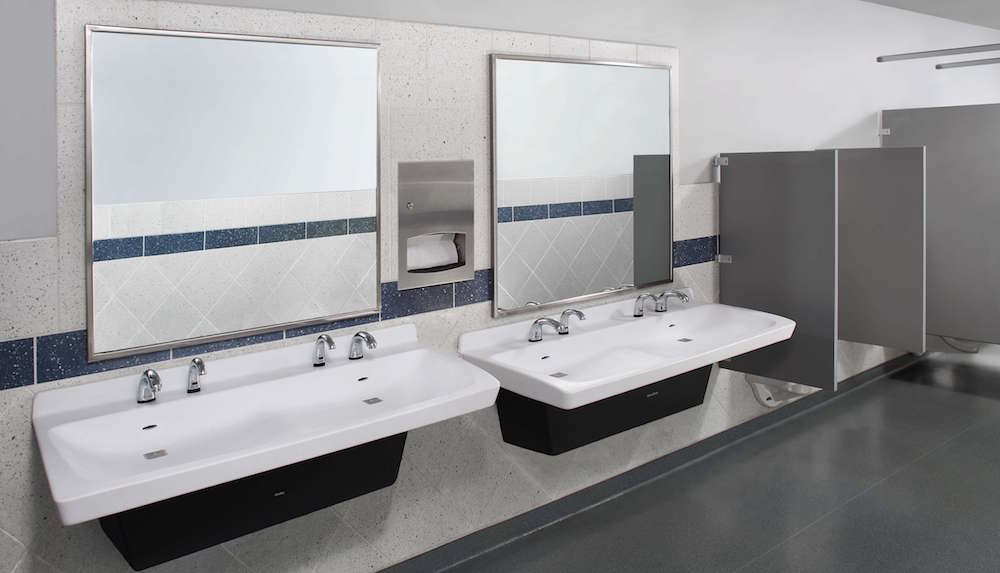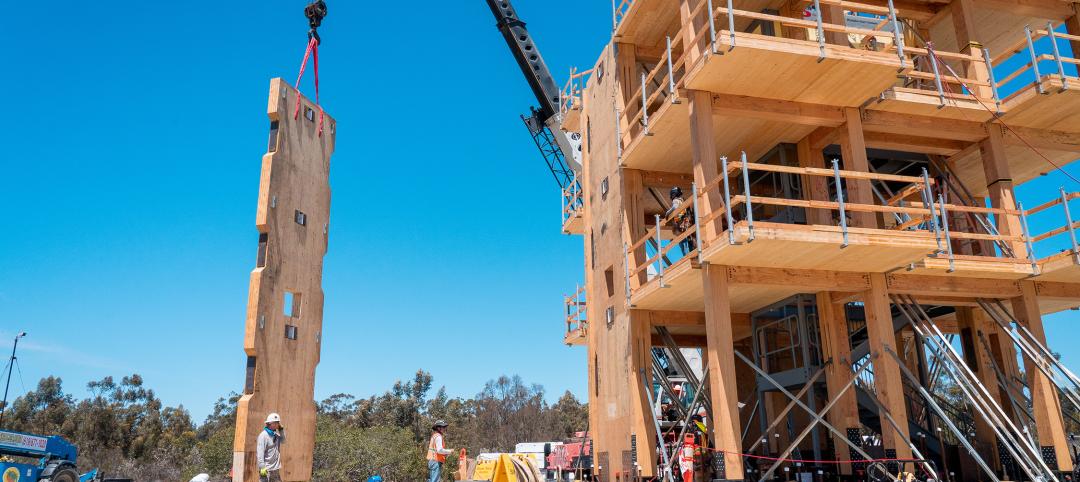The restroom fixture manufacturer Bradley released its 2016 Healthy Hand Washing Survey, which gives some insight into bathroom problems, usage, and possible improvements.
The results come from a national online survey of 1,062 American adults split nearly evenly among men and women. They were asked about their hand washing habits in public restrooms and concerns about germs and sanitation.
Bradley identified 10 trends in public bathrooms:
- Respondents use their cell phones in restroom stalls, using their devices to text, surf the web, and check social media and email. Eight percent of men say they’ve checked their fantasy sports league while in a stall.
- People try to avoid touching surfaces like door handles, stall doors, faucets, sinks, and soap and towel dispensers.
- People make an effort to dodge germs. They operate the toilet flusher with their foot, use a paper towel when touching the restroom door and faucet handles, and open and close doors with their hip.
- The most frustrating restroom situation is empty or jammed toilet paper dispensers. People also dislike partition doors that don’t latch, empty or jammed towel or soap dispensers, and bathrooms that appear dirty.
- Respondents judge businesses based on a restroom’s cleanliness. Most say that a messy restroom indicates poor management and a lack of concern about appearance or customer satisfaction.
- Nearly 70% say they have had an unpleasant experience because of the conditions in a public restroom. The figure is up from 51% in 2012.
- People aren’t as fond of their workplace restrooms anymore. Only half now describe the restrooms at their workplace as excellent or very good, compared to 66% in 2012.
- Almost 80% say they frequently or occasionally see others leave a public restroom without washing their hands. Twenty percent of men disclosed they skip washing because they didn’t feel the need.
- Of those who say they don’t wash their hands, most attribute that to a lack of resources like soap or paper towels, or dirty or broken sinks.
- People would like to see public bathrooms add touchless fixtures and paper towels (even if there are dryers). More frequent cleanings are also a suggestion.
Related Stories
Multifamily Housing | Jun 29, 2023
5 ways to rethink the future of multifamily development and design
The Gensler Research Institute’s investigation into the residential experience indicates a need for fresh perspectives on residential design and development, challenging norms, and raising the bar.
Apartments | Jun 27, 2023
Average U.S. apartment rent reached all-time high in May, at $1,716
Multifamily rents continued to increase through the first half of 2023, despite challenges for the sector and continuing economic uncertainty. But job growth has remained robust and new households keep forming, creating apartment demand and ongoing rent growth. The average U.S. apartment rent reached an all-time high of $1,716 in May.
Contractors | Jun 26, 2023
Most top U.S. contractors rarely deliver projects on time: new study
About 63% of leading U.S. contractors are delivering projects out of schedule, according to a survey of over 300 C-suite executives and owners in the construction industry by XYZ Reality. The study implies that the industry is struggling with significant backlogs due, in part, to avoidable defects, scan, and rework.
Industry Research | Jun 15, 2023
Exurbs and emerging suburbs having fastest population growth, says Cushman & Wakefield
Recently released county and metro-level population growth data by the U.S. Census Bureau shows that the fastest growing areas are found in exurbs and emerging suburbs.
Contractors | Jun 13, 2023
The average U.S. contractor has 8.9 months worth of construction work in the pipeline, as of May 2023
Associated Builders and Contractors reported that its Construction Backlog Indicator remained unchanged at 8.9 months in May, according to an ABC member survey conducted May 20 to June 7. The reading is 0.1 months lower than in May 2022. Backlog in the infrastructure category ticked up again and has now returned to May 2022 levels. On a regional basis, backlog increased in every region but the Northeast.
Industry Research | Jun 13, 2023
Two new surveys track how the construction industry, in the U.S. and globally, is navigating market disruption and volatility
The surveys, conducted by XYZ Reality and KPMG International, found greater willingness to embrace technology, workplace diversity, and ESG precepts.
| Jun 5, 2023
Communication is the key to AEC firms’ mental health programs and training
The core of recent awareness efforts—and their greatest challenge—is getting workers to come forward and share stories.
Mass Timber | Jun 2, 2023
First-of-its-kind shake test concludes mass timber’s seismic resilience
Last month, a 10-story mass timber structure underwent a seismic shake test on the largest shake table in the world.
Contractors | May 24, 2023
The average U.S. contractor has 8.9 months worth of construction work in the pipeline, as of April 2023
Contractor backlogs climbed slightly in April, from a seven-month low the previous month, according to Associated Builders and Contractors.
Multifamily Housing | May 23, 2023
One out of three office buildings in largest U.S. cities are suitable for residential conversion
Roughly one in three office buildings in the largest U.S. cities are well suited to be converted to multifamily residential properties, according to a study by global real estate firm Avison Young. Some 6,206 buildings across 10 U.S. cities present viable opportunities for conversion to residential use.


















